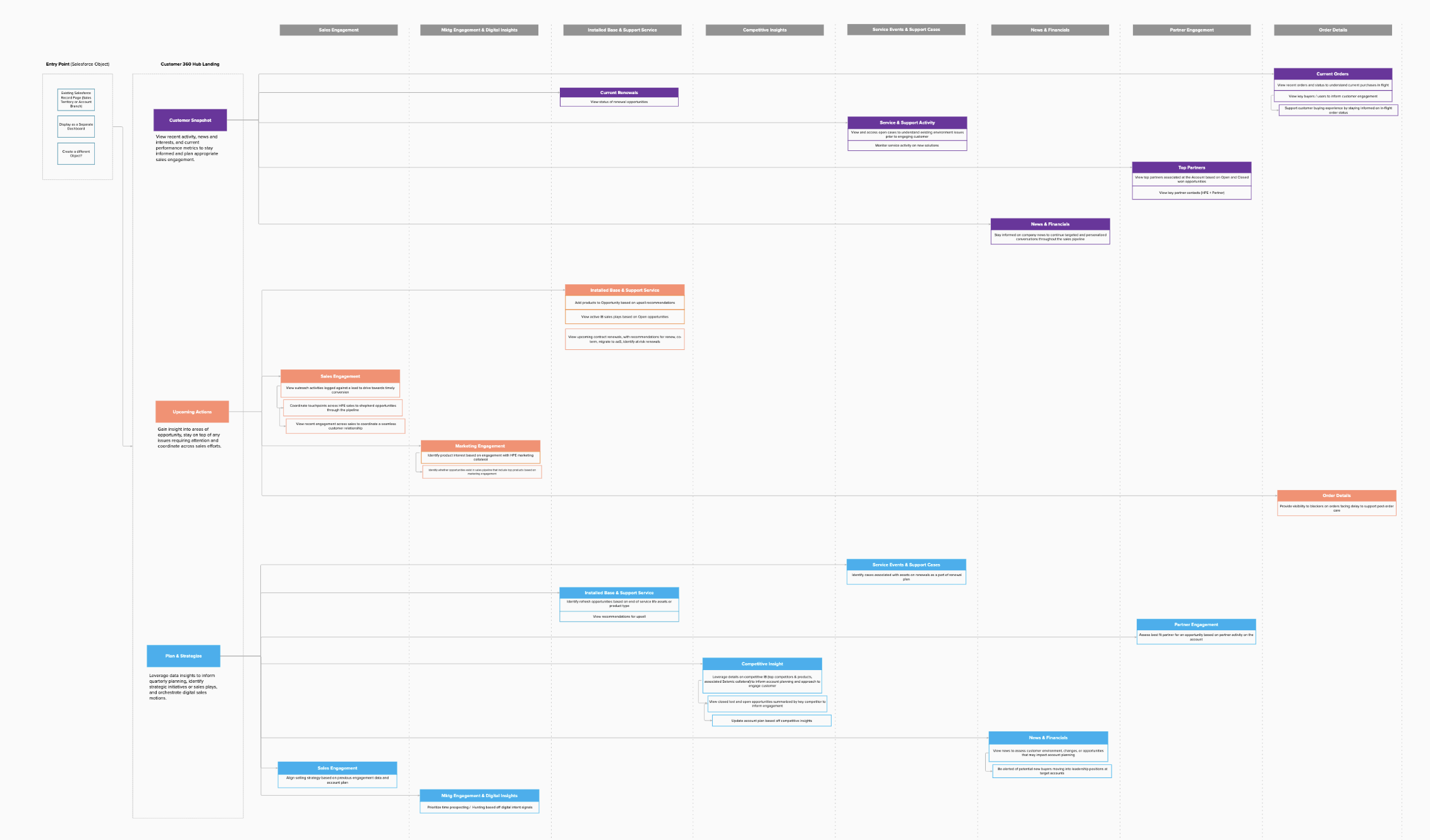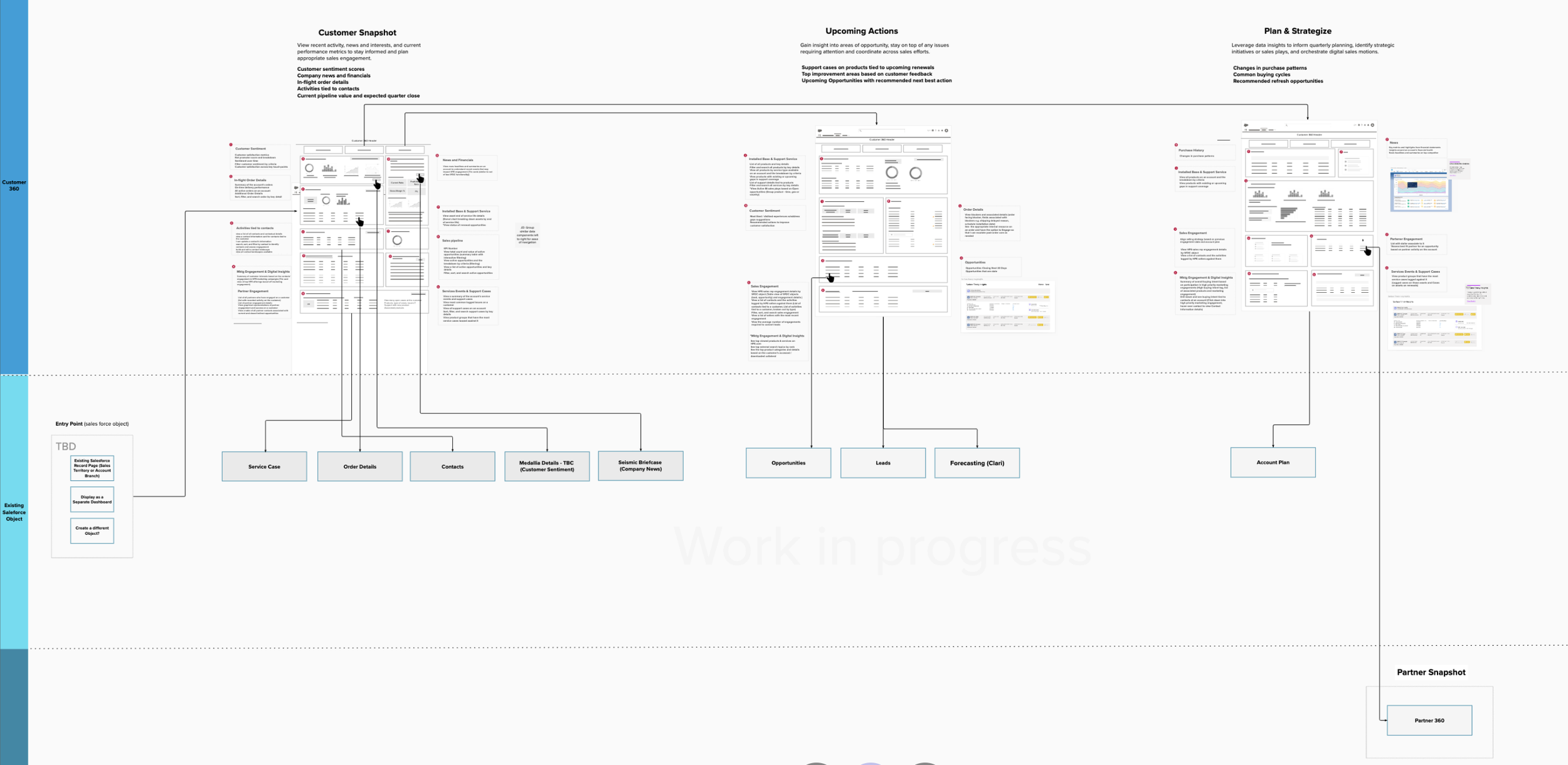Project Brief
Hewlett Packard Enterprise (HPE) initiated a strategic effort to modernize its internal sales operations through the development of a centralized customer sales dashboard leveraging Salesforce Customer 360. This solution was designed to support the company’s Customer 360 vision by equipping the sales team with an integrated platform that delivers real-time insights, improves collaboration, and supports data-driven decision-making across the customer journey.
Company: Hewlett Packard Enterprise (HPE)
Role: Product Designer
Salesforce
The Challenge
Sales teams lacked a unified view of customer data, which led to inefficiencies in their workflow, missed opportunities, and inconsistent customer experiences. Without centralized, real-time access to relevant information, it was difficult to personalize interactions or identify growth opportunities effectively.
👨🏻 User Goal: Empower sales representatives with quick, seamless access to comprehensive customer profiles and insights—enabling smarter decision-making, more meaningful engagement, and better time management.
📈 Business Goal: Strengthen the company’s ability to drive growth through improved sales strategies, greater operational transparency, and personalized customer experiences—achieved by delivering relevant insights for renewals, refreshes, and new offerings.
🎯 Impact: The new Salesforce dashboard provided a single source of truth for customer data, streamlining sales processes and reducing manual effort. It improved cross-team collaboration, enhanced customer satisfaction, and directly contributed to increased sales performance and revenue opportunities.
Insight Map
To deeply understand the needs, pain points, and motivations of HPE’s internal sales team, I conducted stakeholder and user interviews and reviewed sales workflows.
Customer Journey Map
Customer Journey Map
To visualize the end-to-end experience of a sales representative using the dashboard, I created a customer journey map that charted typical workflows from lead engagement through to post-sale follow-up.
This journey map became a guiding artifact for prioritizing features and validating UX decisions throughout the design and implementation phases.
High Fidelity Wireframes
Transitioning from low-fidelity prototypes, the design progressed to high-fidelity wireframes that incorporated the Salesforce Lighting Design System. Collaborating closely with a team of developers for areas of customization, the design not only adhered to industry best practices but also allowed for seamless customization within the Salesforce environment. This phase focused on refining the visual and interactive elements of the dashboard, ensuring a cohesive and intuitive user experience.
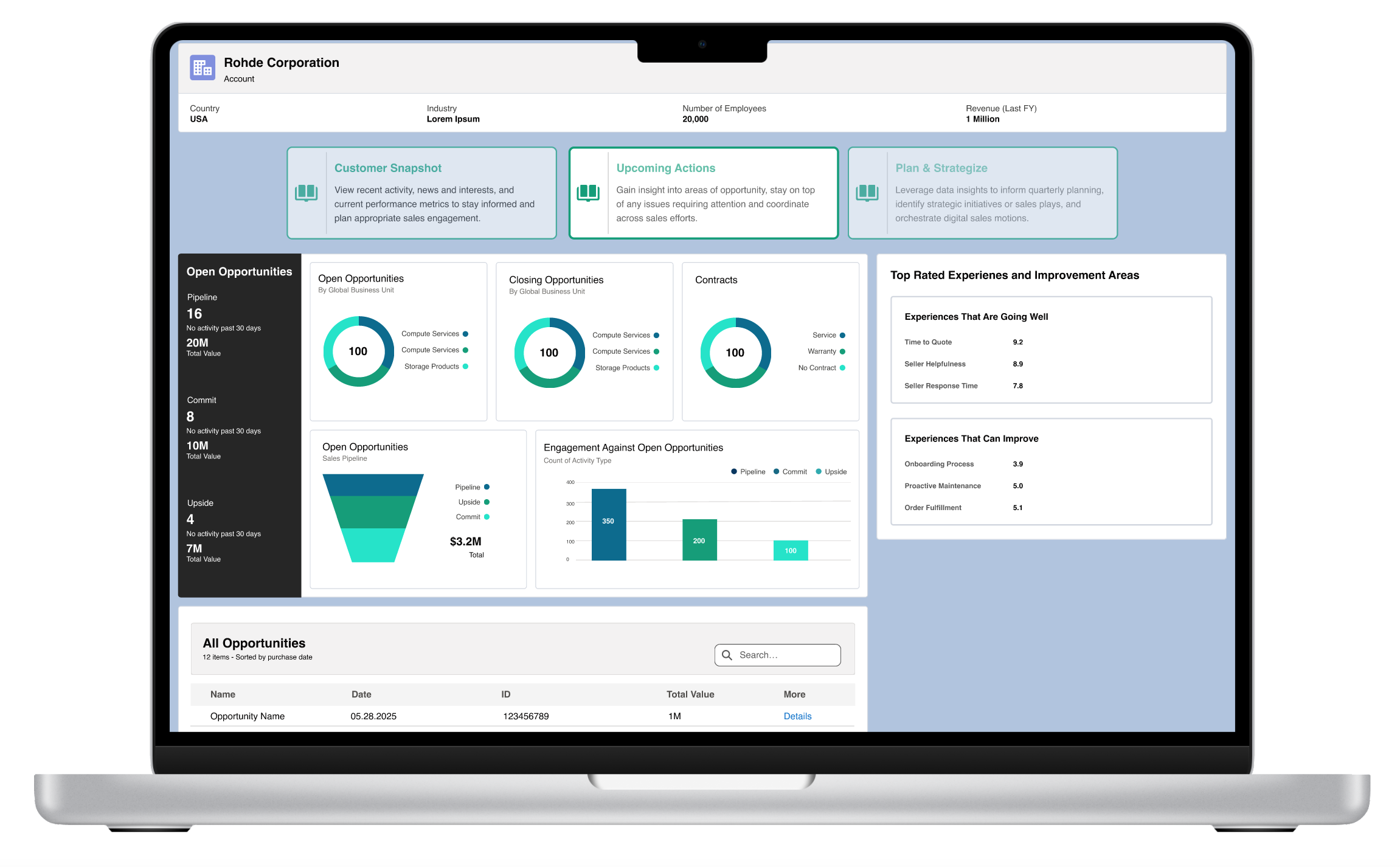
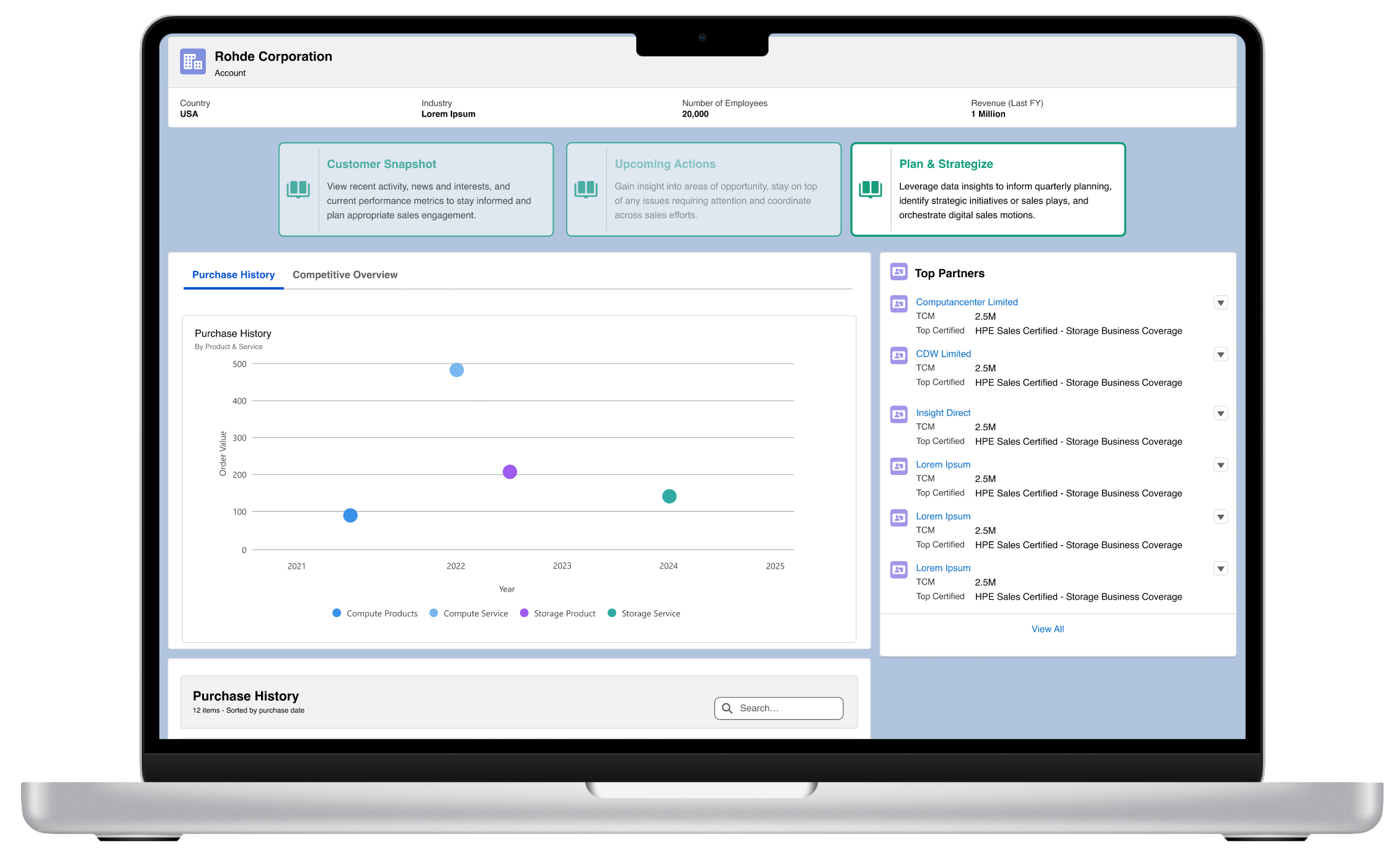
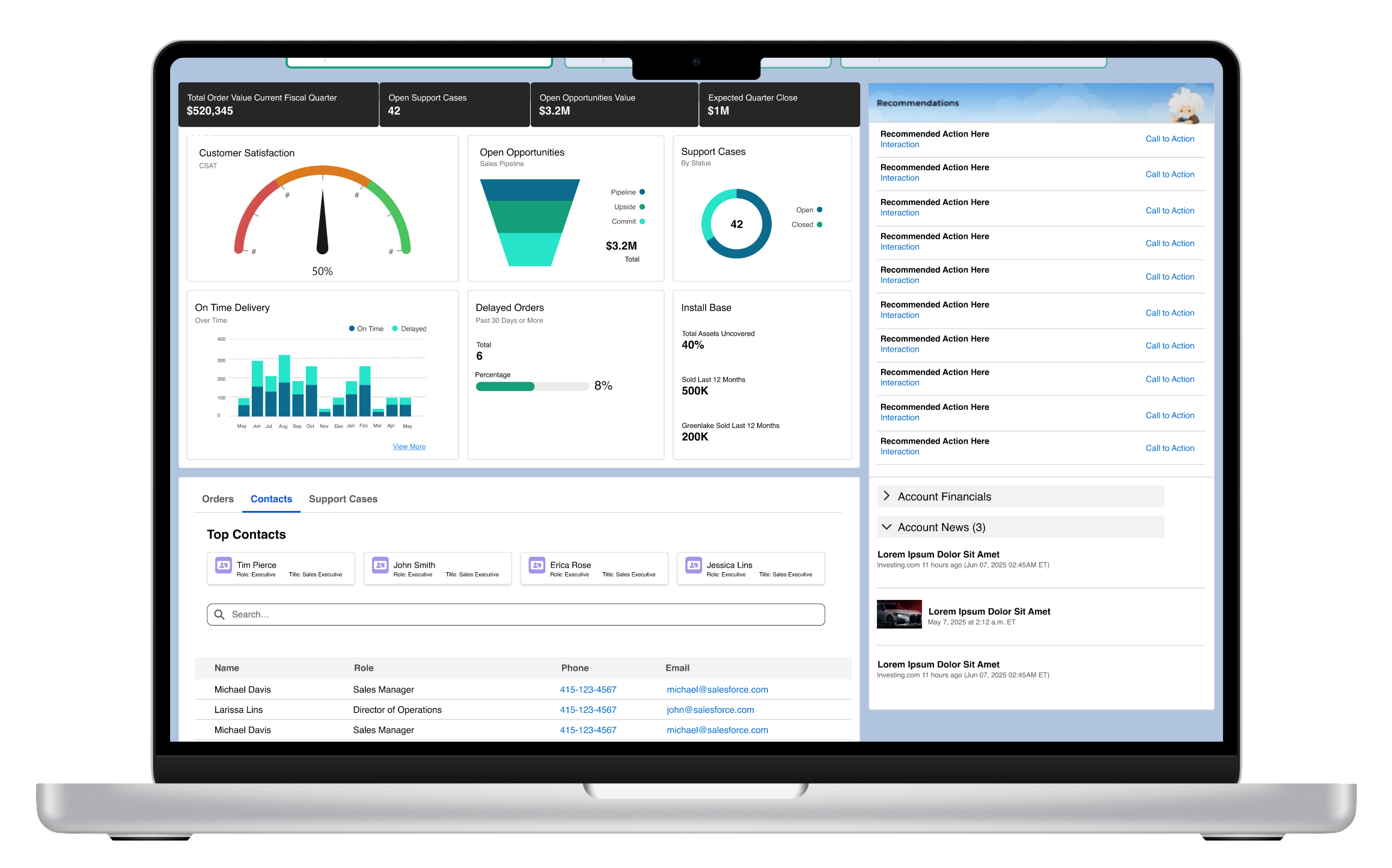
Implementation & Iteration
The developed high-fidelity wireframes served as a blueprint for the implementation phase, involving the integration of the Salesforce solution into the technology company's sales ecosystem. Regular feedback loops were established to facilitate ongoing refinement and iteration, ensuring that the final product aligned seamlessly with the evolving needs of both users and stakeholders.
Outcome
The result of this comprehensive process was a robust and user-friendly customer sales dashboard that empowered the internal sales team with a unified view of customer data. This newfound clarity facilitated optimized sales strategies, improved customer experiences, and supported the company's growth objectives through personalized insights and recommendations. The project not only addressed the initial problem statement but also showcased the effectiveness of a user-centric design approach in driving meaningful outcomes for the organization.


